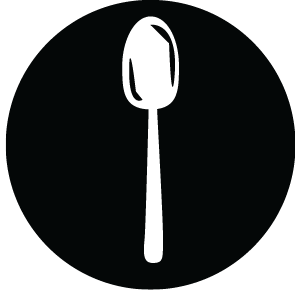Have you ever watched the food ad with the delicious three-tiered burger with cheese dripping down the sides? Or maybe you’ve seen someone take a sensuous bite from a piece of chocolate with caramel flowing from the opening. If you are like me, then you are captivated by these ads and are left utterly disappointed when given a greasy lukewarm pile of meat or a chocolate with stiff caramel is delivered instead.
How does this happen?
I went behind the scenes of a few food advertisements to get an in-depth look at the process and the team behind those magical food masterpieces we see in magazines and on our screens.

The Team
The Client
The Client is the owner of the product being featured. Whether it is an independent company with just a few products, or a large grocery store, they are in charge of creating the brief for the shoot or video and hiring the freelancers to bring their product to life.
The Project Manager
It may vary from shoot to shoot, but sometimes the client will contract the creation of the brief to a freelancer who is in charge of managing the overall project. They serve as the main point of contact between the team of freelancers and the company. Individuals in this role often have both a business and creative background. This managerial position involves staying on top of marketing trends, ensuring that the needs of the client are met, appealing to the customer, and managing communication between the client and the creative freelancers.

The Chef
The chef on set may not always have a restaurant background but must be able to follow a recipe and create their own recipes from scratch, depending on what the project calls for. On the two shoots that I went to, both chefs had a teaching background and have come to work primarily on shoots over time. It is also the chef's job to retrieve ingredients, prep necessary items the day before the shoot, and cook on the shoot for video content.
The Stylist
A food stylist is the person who makes the food into art. Using the client briefing, the stylist will bring in the proper plates, cutlery, and other props to highlight the food while staying within the aesthetic parameters. On the shoot, this role is very hands on as it requires constant rearranging of the elements and touching up in between takes. For instance, on a parmesan and chive product shoot, the stylist would add chives to the product so that the green would be highlighted on camera.

The Photographer
The photographer’s job is relatively self-explanatory. With generally three cameras on each shoot, the photographer adjusts the cameras to capture multiple different angles and an overhead shot. During video shoots, the cameraman gives the direction for when to start and stop, and ultimately will edit the final footage to give to the client.
The Brief
Before the shoot, each member of the team is briefed on what the shoot should feature and the aesthetic that should be captured. The brief is a document that gives details about color scheme, lighting, and angles that the client prefers. More detailed briefings may include what plates and cutlery should be used, while others may leave that to the stylist’s judgement. The brief will also address whether the focus should be on the product, the dish, or the hands that create them. For cooking videos, the hands are very important, while for still shots you may not see them. The briefing will also include example photos from previous shoots to guide the team.

The Process
Although the team consists of independent contractors and freelancers, teamwork is an essential component of the process. Each member has a voice on the shoot as each is an expert in what they do and therefore has valuable input. For instance, the stylist and photographer have a more thorough eye for design, while the manager is concentrated on the client and the consumer.
Over the course of about seven hours the team will do about fifteen different shots for different products while for a video shoot the team may cook about three dishes all centered around the same product. With constant editing from every member of the team, the number of takes is countless. Collectively they will agree on several different photos to give the client a variety of options.

If I haven’t yet convinced you that a career behind food advertisements may be for you, then try being on set. Despite the large amount of focus and detail that this process requires, everyone who works in this field appreciates food and how it brings people together. The atmosphere on set captures this sentiment as it tends to be very social with coffee and snack breaks. After all, who better to share food with than a group of people who love and understand food as well as you do?



